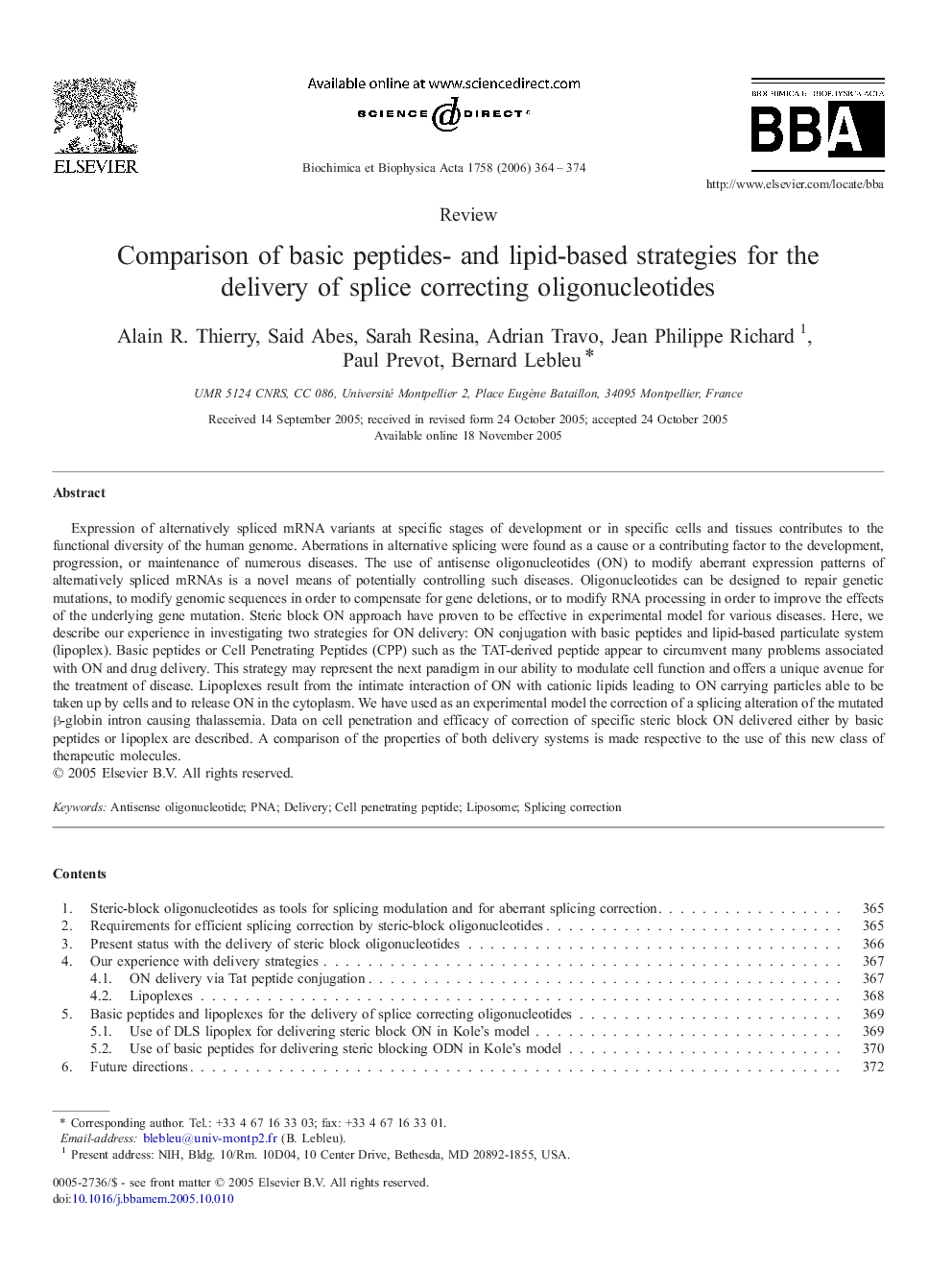| کد مقاله | کد نشریه | سال انتشار | مقاله انگلیسی | نسخه تمام متن |
|---|---|---|---|---|
| 1946147 | 1053290 | 2006 | 11 صفحه PDF | دانلود رایگان |

Expression of alternatively spliced mRNA variants at specific stages of development or in specific cells and tissues contributes to the functional diversity of the human genome. Aberrations in alternative splicing were found as a cause or a contributing factor to the development, progression, or maintenance of numerous diseases. The use of antisense oligonucleotides (ON) to modify aberrant expression patterns of alternatively spliced mRNAs is a novel means of potentially controlling such diseases. Oligonucleotides can be designed to repair genetic mutations, to modify genomic sequences in order to compensate for gene deletions, or to modify RNA processing in order to improve the effects of the underlying gene mutation. Steric block ON approach have proven to be effective in experimental model for various diseases. Here, we describe our experience in investigating two strategies for ON delivery: ON conjugation with basic peptides and lipid-based particulate system (lipoplex). Basic peptides or Cell Penetrating Peptides (CPP) such as the TAT-derived peptide appear to circumvent many problems associated with ON and drug delivery. This strategy may represent the next paradigm in our ability to modulate cell function and offers a unique avenue for the treatment of disease. Lipoplexes result from the intimate interaction of ON with cationic lipids leading to ON carrying particles able to be taken up by cells and to release ON in the cytoplasm. We have used as an experimental model the correction of a splicing alteration of the mutated β-globin intron causing thalassemia. Data on cell penetration and efficacy of correction of specific steric block ON delivered either by basic peptides or lipoplex are described. A comparison of the properties of both delivery systems is made respective to the use of this new class of therapeutic molecules.
Journal: Biochimica et Biophysica Acta (BBA) - Biomembranes - Volume 1758, Issue 3, March 2006, Pages 364–374